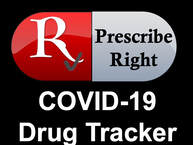|
Immunoglobulins
In a five patient Chinese case series (Treatment of 5 Critically Ill Patients With COVID-19 With Convalescent Plasma) infusion of convalescent plasma 10 to 22 days after hospital admission improved the patients clinical status with a reduction in lesions within three days and four of the five patients no longer needed respiratory support after nine days. All patients had high viral loads and were receiving mechanical ventilation, antiviral drugs and methylprednisolone. The FDA is allowing use of convalescent plasma to treat COVID-19 through an Emergency IND. Convalescent plasma can be created locally from recovered patients, so it is much quicker to obtain. A review of convalescent plasma with a graphic explanation of how it is attained is available in the Journal of Clinical Investigation. Chloroquine and Hydroxychloroquine French researchers compared 26 COVID-19 patients treated with hydroxychloroquine 200 mg three times per day for ten-days to ten patients from the same hospital and other hospitals that did not receive hydroxychloroquine. Six of the hydroxychloroquine patients also received a standard 5-day azithromycin regimen. After six days, nasopharyngeal samples were negative in eight of the fourteen (57%) hydroxychloroquine patients, all six (100%) hydroxychloroquine/azithromycin patients and two of sixteen in the control group. The French researchers released data from 80 patientsshowing that 83% of patients at day 7 had negative nasopharyngeal tests and 93% at day 8. Virus cultures from respiratory samples at Day 5 were negative in 97.5% patients. In a Chinese trial involving 30 COVID-19 patients, 86.7% of patients treated with hydroxychloroquine had a negative pharyngeal sample at seven days compared to 93.3% in the control group. Temperature normalization was the same at one day in the two groups. Analysts have questioned the results since patients in both groups may have received lopinavir/ritonavir, antibiotics and nebulized interferon-alpha. (Note: I have linked to a Google translation of the article, which was published in Chinese) University of Minnesota researchers are evaluating hydroxychloroquine (800 mg orally once, followed in 6 to 8 hours by 600 mg, then 600mg once a day for 6 consecutive days) as post-exposure prophylaxis for COVID-19 compared to standard of care in a Phase II/III trial involving 1,500 patients that have been exposed to a COVID-19 case within 3 days. The study is estimated to begin in April 2020. The World Health Organization is evaluating remdesivir, chloroquine, hydroxychloroquine and lopinavir-ritonavir with and without interferon-beta versus supportive care in the SOLIDARITY COVID-19 trial. The trial has an adaptive design, so that other drugs can be added at a later time. A European trial, DISCOVERY is being set up with the same parameters. Chinese researchers are comparing chloroquine 1 g x 2 days, then 500 mg x 12 days to hydroxychloroquine sulfate 200 mg bid x 14 days for the treatment of COVID-19 in an open-label, 100 patient trial, a third group receiving standard treatment only is added as a control. In vitro data suggests that chloroquine has activity against COVID-19 in achievable levels. University of Oxford researchers are evaluating chloroquine (loading dose of 10mg base/kg, followed by 150 mg daily for three months) and hydroxychloroquine 200 mg daily for 3-months as post-exposure prophylaxis for COVID-19 compared to standard of care in 40,000 patients that have been exposed to a COVID-19 case within 3 days. The study is estimated to begin in April 2020. Chloroquine went into shortage on March 9. The FDA has granted an Emergency Use Authorization (EUA) for the use of chloroquine and hydroxychloroquine for the treatment of COVID-19 from the National Stockpile. The National Stockpile consists of 30 million doses of hydroxychloroquine donated by Sandoz to the Department of Health and Human Services (HHS) and 1 million doses of chloroquine contributed by Bayer. Requirements for use of chloroquine and hydroxychloroquine under the EUA include:
J&J screened 10 COVID-19 vaccine variants selected a vaccine candidate in late March. J&J expects to begin clinical trials in September 2020 and submit a BLA by the end of 2020 with a vaccine being approved with an emergency use authorization in early 2021. J&J has two backup COVID-19 vaccines candidates to test if the primary candidate fails in clinical trials. Comments are closed.
|
Stay informed, subscribe to the Prescribe Right Pharmaceutical Pipeline Tracker
Archives
January 2023
Categories |
Services |
Company |
Support |
© COPYRIGHT 2015. ALL RIGHTS RESERVED.
|


 RSS Feed
RSS Feed